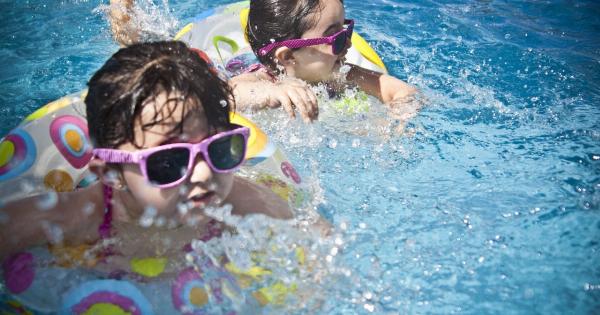As parents, our primary concern is always the safety and well-being of our children. We strive to protect them from any harm and ensure their healthy development.
However, in today’s digital age, new dangers and risks emerge, often disguised as harmless challenges or trends. One such perilous practice that has gained popularity among adolescents is the “choking game.” This game involves intentionally cutting off the oxygen supply to the brain, leading to a temporary high or euphoric sensation.
What may seem like a harmless thrill can have severe and even fatal consequences. In this article, we will explore the dangers of the choking game and provide essential tips to safeguard your kids.
Understanding the Choking Game
The choking game goes by numerous names, including the pass-out challenge, a knockout game, or even space monkey. It involves self-asphyxiation or choking oneself or having someone else apply pressure to restrict their airflow.
The objective is to deprive the brain of oxygen, resulting in a brief loss of consciousness.
While the game may have been around for decades, it has recently gained traction through social media platforms and online forums.
Videos and posts showcasing participants engaging in the choking game have proliferated, making it more accessible and enticing for impressionable teenagers.
The Dangers and Risks
Engaging in the choking game exposes children to various immediate and long-term risks. These risks include:.
1. Accidental Death or Serious Injury
The most severe consequence of the choking game is accidental death. When adolescents participate in this dangerous activity alone, without proper supervision, the risk of a fatal outcome significantly increases.
Even if death does not occur, the game can result in serious injuries such as head trauma from falls or seizures during unconsciousness.
2. Brain Damage
Every time the brain is deprived of oxygen, it suffers damage. The choking game’s repeated practice can lead to long-lasting cognitive impairments, memory loss, concentration problems, and even a decline in overall intelligence.
These effects can hinder a child’s academic performance and future opportunities.
3. Vision Problems and Eye Damage
During the choking game, the increased pressure in the head can cause blood vessels in the eyes to rupture. This can result in blurred vision or, in severe cases, permanent eye damage or blindness.
Visual impairments can significantly impact a child’s quality of life.
4. Increased Risk-Taking Behavior
Participating in the choking game can lead to an increased inclination towards risk-taking behavior.
The intense sensation experienced during the game can develop into a desire for similar excitement, pushing children to engage in other dangerous activities or substance abuse.
5. Emotional and Psychological Impact
Witnessing or being a part of the choking game can have profound emotional and psychological effects on children. Survivors may experience feelings of guilt, shame, or fear of being caught, leading to secrecy and an increased sense of isolation.
In worst-case scenarios, it can even contribute to the development of depression, anxiety, or post-traumatic stress disorder (PTSD).
Tips for Safeguarding Your Kids
As parents, we play a crucial role in protecting our children from harmful influences and dangerous activities. Here are some essential tips to safeguard your kids from the choking game:.
1. Open Communication
Establish an open line of communication with your children and create a non-judgmental environment where they can freely express their thoughts and concerns. Encourage dialogue about current trends and potential risks, including the choking game.
Educate them about the dangers and encourage them to come to you if they encounter anything worrying.
2. Monitor Internet Usage
Monitor your child’s internet usage and actively engage in their online activities. Keep an eye on their social media accounts, chat forums, and video-sharing platforms. Look out for any signs of engagement or fascination with the choking game.
Restrict access to inappropriate content and set boundaries for online behavior.
3. Educate Your Child
Teach your child about the risks associated with the choking game, ensuring they fully understand the potential consequences. Explain how cutting off oxygen to the brain can lead to severe injuries or even death.
Emphasize the importance of self-preservation and responsible decision-making.
4. Recognize Warning Signs
Be vigilant for any warning signs that your child may be involved in the choking game.
These signs can include bloodshot eyes, marks or bruises on the neck, frequent or severe headaches, unexplained ropes or belts in unusual places, sudden changes in behavior or demeanor, and wearing high-necked clothing even in warm weather. If you notice any of these signs, address your concerns immediately.
5. Involve the School and Community
Reach out to your child’s school and community organizations to raise awareness about the choking game. Ask them to incorporate prevention programs into the curriculum and organize workshops or presentations on the topic.
Encourage other parents to stay informed and vigilant.
Conclusion
The choking game poses a significant threat to the safety and well-being of our children. By understanding the dangers and taking proactive measures, we can help safeguard our kids from falling prey to this harmful practice.
Open communication, monitoring online activities, educating our children, recognizing warning signs, and involving the school and community are essential steps in protecting our children’s lives. Let us remain vigilant and united in our efforts to ensure their safety and provide them with the guidance they need to make responsible choices.






























